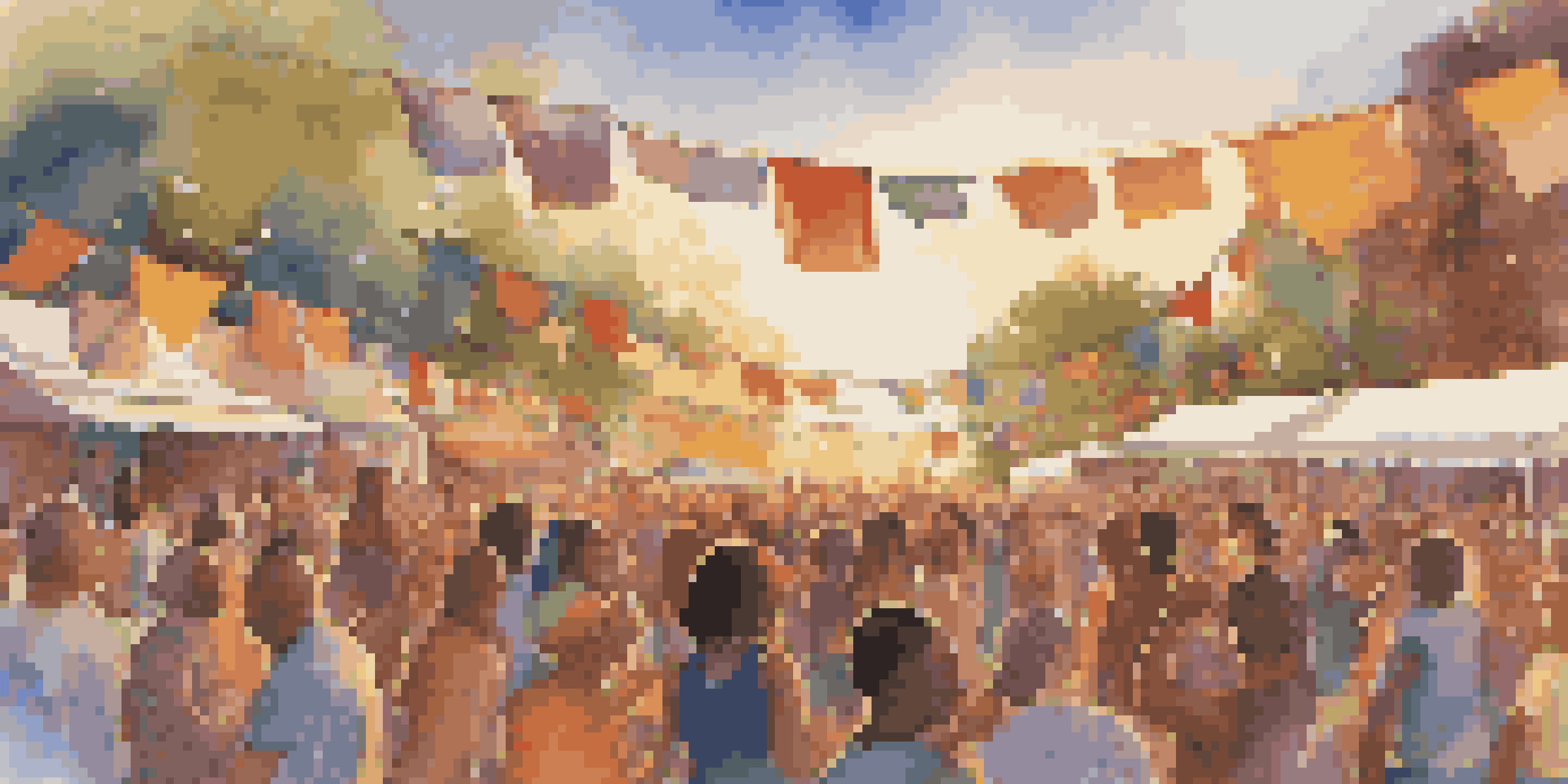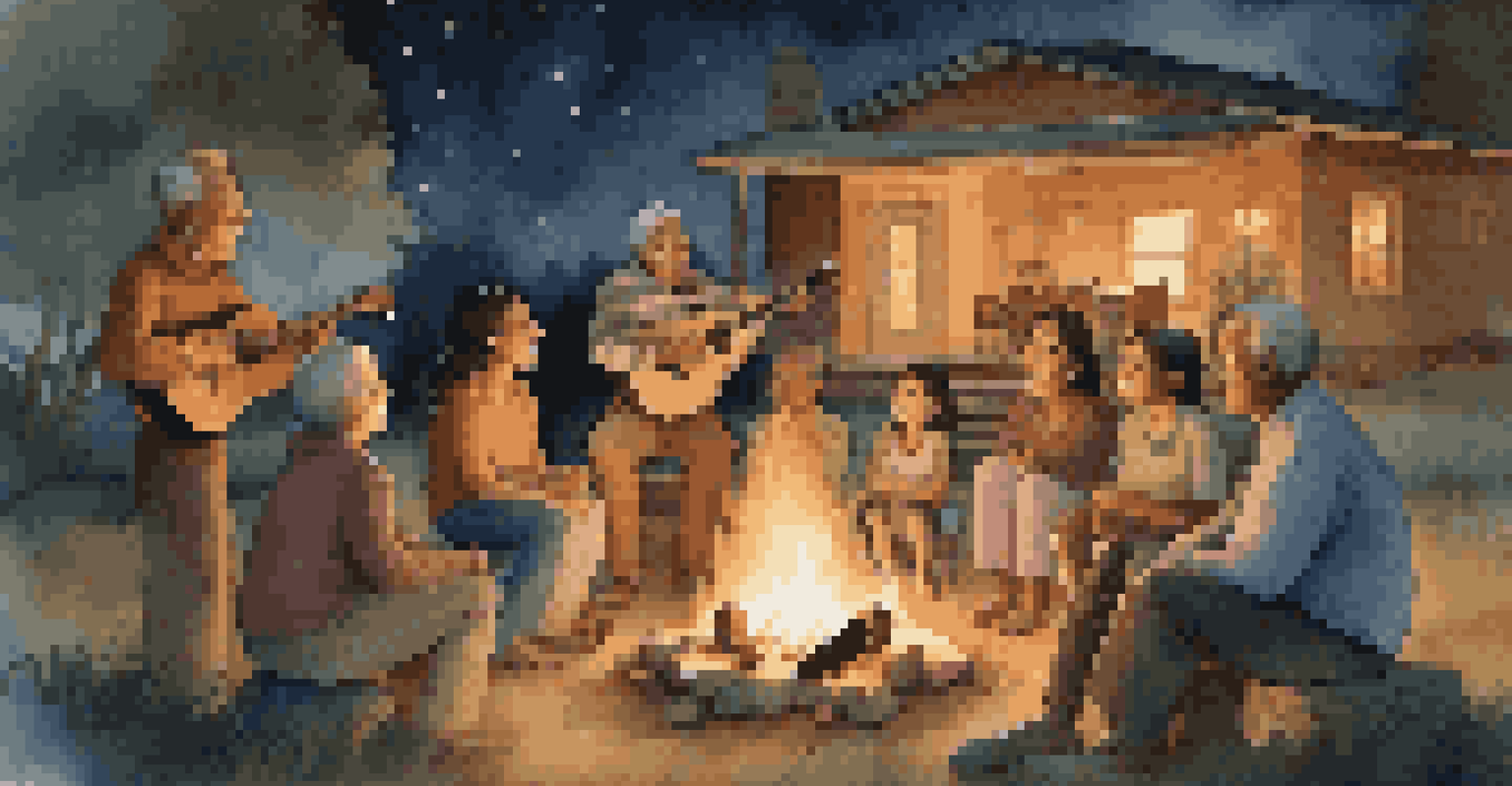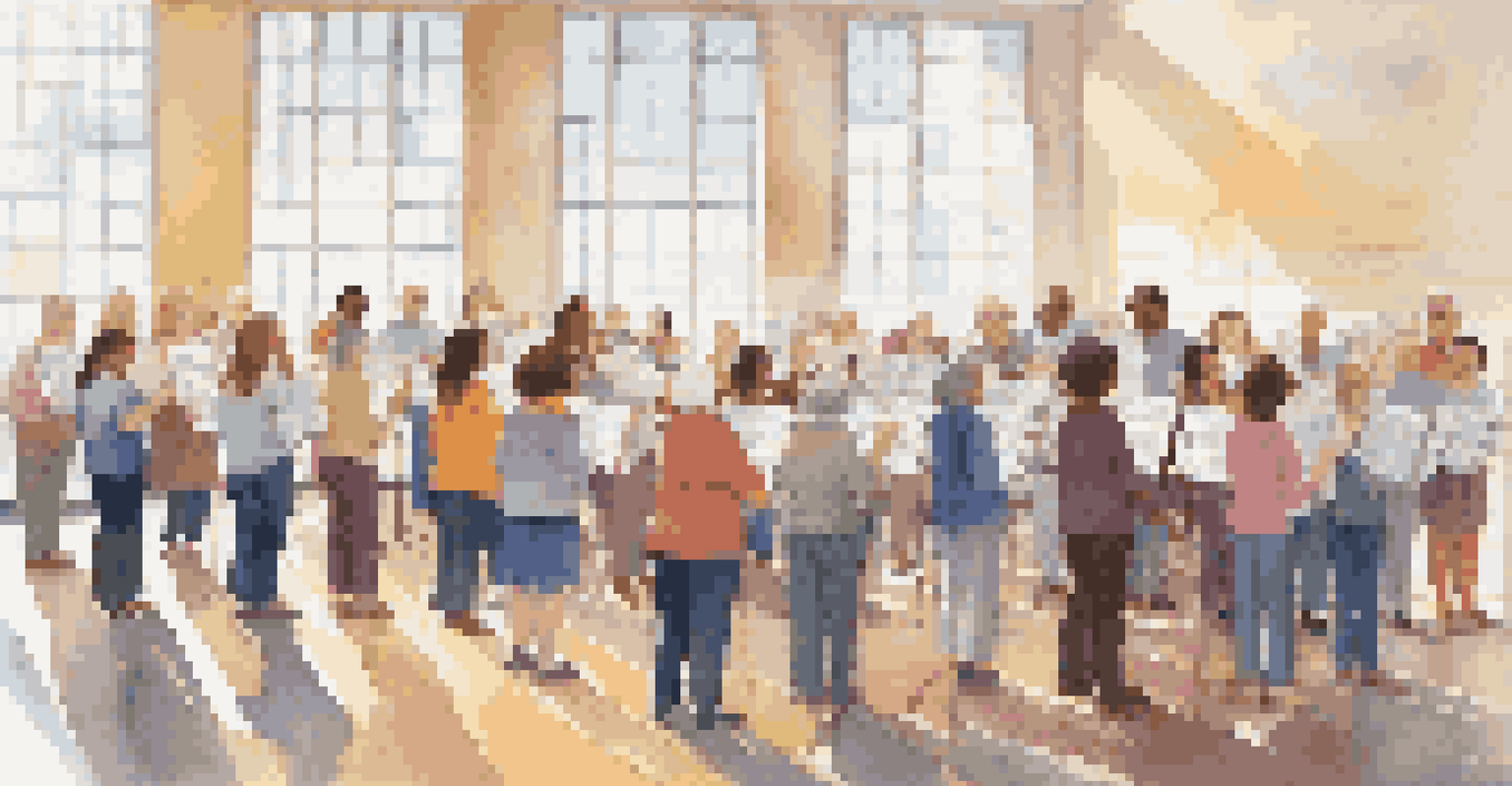How Music Contributes to Community Identity and Belonging

Music as a Reflection of Community Values and Culture
Music often mirrors the unique values and culture of a community, serving as a soundtrack to its identity. For instance, traditional folk songs can tell stories of a region's history, struggles, and triumphs, encapsulating the essence of its people. When community members gather to listen to or perform these songs, they engage in a shared experience that reinforces their collective identity.
Music is the shorthand of emotion.
Moreover, local musicians frequently draw inspiration from their surroundings, crafting lyrics and melodies that resonate with their audience's everyday experiences. This connection fosters a sense of pride and belonging, as community members recognize their lives and stories reflected in the music. Just like a favorite neighborhood café, music can evoke nostalgia and familiarity, solidifying bonds among residents.
Ultimately, music acts as a living archive of community culture, preserving traditions while also allowing for evolution. As new generations contribute their voices to the mix, they create a dynamic soundscape that both honors the past and embraces the future. This ongoing dialogue through music is what keeps community identity vibrant and alive.
Creating Shared Experiences Through Live Music Events
Live music events, such as concerts and festivals, serve as powerful catalysts for community engagement and connection. These gatherings provide a space where individuals can come together, dancing and singing along to familiar tunes, creating a sense of belonging. When people share in the excitement of a live performance, they forge friendships and strengthen existing bonds.

For example, a local music festival may feature a range of genres that reflect the community's diversity, inviting everyone to participate, regardless of their musical preferences. This inclusivity allows for the celebration of different cultures and backgrounds, further enriching the community's identity. It’s akin to a potluck dinner, where everyone brings something unique to the table.
Music Reflects Community Identity
Music serves as a mirror of a community's values and culture, preserving traditions while fostering a sense of belonging.
Additionally, the shared joy of live music can foster a sense of pride in the community itself. When residents come together to support local musicians, they not only uplift the artists but also reinforce their commitment to their hometown. These events highlight the importance of community spirit, showing that music truly has the power to unite.
Music as a Tool for Social Change and Advocacy
Throughout history, music has played a significant role in advocating for social change, often becoming the anthem of movements. Artists use their platforms to raise awareness about pressing issues, inspiring community members to unite for a common cause. Songs of protest can galvanize individuals, creating a shared sense of purpose that strengthens community ties.
Without music, life would be a mistake.
Consider the civil rights movement, where powerful songs like 'We Shall Overcome' became rallying cries, fostering solidarity among advocates. These melodies not only provided comfort and hope during challenging times but also reinforced a shared identity among those fighting for justice. In this way, music becomes a powerful vehicle for collective action.
Furthermore, when communities come together to support social causes through music, they create an environment of empathy and understanding. Benefit concerts or awareness campaigns can highlight local issues, encouraging residents to engage with their community on a deeper level. Ultimately, music can transcend barriers and bring people together, reinforcing their shared identity in the face of adversity.
Passing Down Traditions Through Generational Music
Music serves as a vital link between generations, facilitating the transfer of traditions and stories from elders to youth. Family gatherings often include songs passed down through the years, allowing younger members to connect with their heritage. These shared musical experiences create a sense of continuity and belonging, reinforcing community identity across generations.
For instance, in many cultures, storytelling is accompanied by traditional music, making these narratives more memorable and engaging. This practice not only preserves cultural history but also teaches younger generations about their roots, ensuring that the community's legacy endures. It's similar to the way recipes are handed down; each meal is infused with love and shared experience.
Live Events Create Shared Joy
Live music events unite individuals through shared experiences, celebrating diverse cultures and reinforcing community bonds.
Moreover, as new generations interpret these traditional songs, they add their own flair, creating a dynamic exchange that keeps the music relevant. This evolution reflects the community's growth while honoring its past, bridging the gap between old and new. In this way, music becomes a living testament to the community's identity, adapting while remaining deeply rooted in tradition.
Fostering Connection Through Collaborative Music Projects
Collaborative music projects, such as community choirs or bands, can foster deep connections among participants. When individuals come together to create music, they often develop friendships and a sense of camaraderie, transcending differences. These projects cultivate an environment where everyone’s voice is valued, reinforcing the idea that each member contributes to the community's identity.
Take, for instance, a local choir that welcomes singers of all skill levels. Through rehearsals and performances, participants bond over their shared love of music, creating lasting relationships that extend beyond the choir itself. It’s like a team sport, where each person plays a vital role in achieving a common goal.
Additionally, these collaborative efforts often reflect the diverse backgrounds of community members, showcasing a rich tapestry of musical styles and influences. This blending of genres not only enhances the overall sound but also encourages appreciation for different cultures. Ultimately, collaborative music projects create a sense of unity, demonstrating that together, the community can create something beautiful.
The Role of Music in Celebrating Community Events and Rituals
Music is often at the heart of community celebrations and rituals, marking significant life events and milestones. From weddings to festivals, these occasions are infused with songs that evoke emotions and memories, uniting participants in a shared experience. When people come together to celebrate, they reinforce their bonds and strengthen their community identity.
For example, during a local festival, traditional music can create an electric atmosphere, drawing people together in joy and celebration. The rhythmic beats and melodies encourage dancing, laughter, and connection, creating lasting memories. It's much like the feeling of a family reunion, where the familiar sounds bring everyone closer together.
Technology Enhances Music Access
Digital platforms expand community music engagement, allowing greater participation while balancing the importance of in-person connections.
Moreover, music can also serve as a form of healing during challenging times. In moments of loss or hardship, songs can provide comfort and solace, reminding community members that they are not alone. Through these shared experiences, music becomes a powerful tool for fostering resilience and unity within the community.
The Impact of Technology on Community Music Engagement
In today's digital age, technology has transformed how communities engage with music, creating new opportunities for connection. Social media platforms allow local artists to reach wider audiences, while online events enable people to participate in music-making from the comfort of their homes. This accessibility opens doors for individuals who may have previously felt excluded from traditional music spaces.
For instance, virtual concerts and online collaborations have become increasingly popular, allowing communities to come together despite physical distance. These events foster a sense of belonging, as participants share their love for music and connect with one another through digital platforms. It’s akin to a virtual neighborhood block party, where everyone is invited to join in the festivities.

However, while technology brings new possibilities, it's essential to remember the value of in-person connections. Balancing both digital and live music experiences can enhance community engagement, ensuring that the rich tapestry of music continues to thrive. Ultimately, technology can serve as a bridge, connecting individuals and fostering a sense of belonging in an ever-evolving musical landscape.